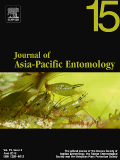
JOURNAL OF ASIA-PACIFIC ENTOMOLOGY
Scope & Guideline
Unveiling the Secrets of Insects for a Sustainable Tomorrow
Introduction
Aims and Scopes
- Insect Diversity and Taxonomy:
The journal features studies on the identification and classification of various insect species, including new species descriptions and taxonomic revisions, particularly in the context of the Asia-Pacific region. - Ecological Interactions:
Research on the ecological roles and interactions of insects within their environments, including pollination biology, predator-prey dynamics, and the impact of environmental changes on insect populations. - Insect Physiology and Molecular Biology:
Papers focusing on the physiological mechanisms, genetic studies, and molecular pathways that govern insect behavior, development, and responses to environmental stressors. - Pest Management and Control Strategies:
Studies that explore integrated pest management strategies, the development of biocontrol agents, and the efficacy of natural products and insecticides in controlling pest populations. - Insect-Plant Interactions:
Research investigating the relationships between insects and plants, including herbivory, pollination, and the effects of host plant characteristics on insect behavior and development. - Applications of Insect Biotechnology:
Exploration of biotechnological approaches involving insects, such as the use of insect-derived compounds in medicine, agriculture, and food production.
Trending and Emerging
- Molecular Ecology and Genomics:
There is an increasing trend towards incorporating genomic and molecular techniques to investigate insect diversity, evolutionary relationships, and responses to environmental changes, reflecting advancements in technology. - Insect-Based Food and Nutritional Studies:
Research exploring the potential of insects as food sources and their nutritional benefits is gaining traction, driven by a growing interest in sustainable food systems. - Climate Change Impact Studies:
A significant rise in studies examining the effects of climate change on insect populations and their interactions with ecosystems highlights the urgent need to understand and mitigate these impacts. - Biocontrol and Sustainable Pest Management:
There is a notable increase in research focused on biological control methods and environmentally friendly pest management strategies, aligning with global sustainability goals. - Insect-Microbe Interactions:
Emerging studies on the interactions between insects and their microbial symbionts are becoming more prevalent, emphasizing the importance of microbiomes in insect health and ecology. - Urban Entomology:
Research pertaining to insect interactions in urban environments is on the rise, addressing the unique challenges posed by urbanization on insect populations and biodiversity.
Declining or Waning
- Traditional Insecticide Efficacy Studies:
Research focusing solely on the efficacy of traditional chemical insecticides without considering integrated approaches or ecological impacts has seen a decline, as the field shifts towards more sustainable and integrated pest management practices. - Generalized Ecological Studies without Specific Context:
Studies that lack specific contextual applications or that do not address the unique ecological dynamics of the Asia-Pacific region have become less common, as the journal emphasizes more targeted and relevant research. - Descriptive Studies without Molecular Insights:
There is a noticeable decrease in purely descriptive studies of insect behavior or ecology that do not integrate molecular or genetic insights, reflecting a shift towards more interdisciplinary approaches. - Static Taxonomic Reviews:
Taxonomic reviews that do not include new data or molecular analysis are becoming less frequent, as the journal encourages more dynamic and data-driven contributions.
Similar Journals
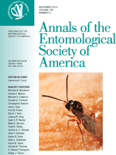
ANNALS OF THE ENTOMOLOGICAL SOCIETY OF AMERICA
Transforming Entomological Research Since 1938ANNALS OF THE ENTOMOLOGICAL SOCIETY OF AMERICA is a premier journal dedicated to advancing the field of insect science, published by Oxford University Press. With an impressive impact factor and classified in the Q1 quartile for its category, this journal ranks among the top publications in agricultural and biological sciences, specifically within insect science, positioned at #28 out of 181, indicating its significant influence and high-quality research contributions. The journal aims to disseminate original research, comprehensive reviews, and groundbreaking findings that enhance our understanding of entomology, spanning across ecological, evolutionary, and applied segments. With a consistent publication history since 1938, researchers, professionals, and students will benefit from the wealth of knowledge presented in its pages. Although the journal does not currently offer open access, it remains a vital resource for those seeking to stay at the forefront of entomological research and innovation.
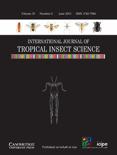
INTERNATIONAL JOURNAL OF TROPICAL INSECT SCIENCE
Uncovering the Secrets of Tropical Insect LifeINTERNATIONAL JOURNAL OF TROPICAL INSECT SCIENCE, published by Springer International Publishing AG, is a leading interdisciplinary journal dedicated to advancing knowledge in the fields of insect science and ecology. With its ISSN 1742-7584 and E-ISSN 1742-7592, this journal provides a platform for researchers to publish high-quality, peer-reviewed articles that explore various aspects of tropical insect biology, behavior, and their ecological impacts. As evidenced by its Q3 ranking in both Ecology, Evolution, Behavior and Systematics and Insect Science, it plays a vital role in fostering scientific dialogue and innovation within these disciplines. Researchers affiliated with the journal benefit from its visibility and growing impact, as demonstrated by its Scopus ranks, with a percentile standing of 61st in Insect Science. Although the journal is not open access, it still reaches a wide academic audience, making significant contributions to our understanding of tropical ecosystems. Situated in Switzerland, this journal is crucial for students, professionals, and researchers invested in the intersection of entomology and ecological science.

BULLETIN OF INSECTOLOGY
Connecting Scholars in the World of EntomologyBULLETIN OF INSECTOLOGY is a prominent academic journal published by ALMA MATER STUDIORUM, UNIV BOLOGNA, Italy, specializing in the field of Insect Science. The journal, with ISSN 1721-8861 and E-ISSN 2283-0332, has established itself as a vital resource for researchers and professionals interested in the diverse aspects of entomology and its applications. It ranks in the Q2 category for Insect Science as of 2023, placing it among the top journals in its field with a Scopus rank of 79 out of 181. The BULLETIN OF INSECTOLOGY is committed to disseminating high-quality research and innovative studies, facilitating open dialogue and collaboration among scientists. As an essential platform for sharing groundbreaking findings, it contributes significantly to the body of knowledge in agricultural and biological sciences, making it an invaluable asset for scholars and practitioners alike. With coverage from 2002 to 2024, this journal continues to foster advancements in entomological research and its importance in tackling environmental challenges.

REVISTA DE LA SOCIEDAD ENTOMOLOGICA ARGENTINA
Empowering Researchers with Accessible KnowledgeREVISTA DE LA SOCIEDAD ENTOMOLOGICA ARGENTINA is an esteemed open-access journal dedicated to the field of entomology, published by the SOCIEDAD ENTOMOLOGICA ARGENTINA. Since its transition to open access in 2013, the journal has sought to promote research in insect science, ecology, and related disciplines, facilitating global dissemination of knowledge and encouraging collaborative studies across borders. Located in the vibrant scientific landscape of La Plata, Argentina, the journal is indexed in Scopus and categorized in the fourth quartile of ecology and insect science, reflecting its commitment to enhancing the discourse within these critical fields. Aiming to bridge the gap between researchers, students, and professionals, REVISTA DE LA SOCIEDAD ENTOMOLOGICA ARGENTINA serves as a platform for innovative research, reviews, and reports on ecological interactions, behavior, and systematic entomology, ultimately driving forward our understanding of insect biodiversity and its broader environmental impacts.
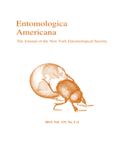
Entomologica Americana
Fostering Insights into Biodiversity and EcologyEntomologica Americana is a pivotal journal in the field of Insect Science, published by the esteemed New York Entomological Society Inc. With its ISSN (1947-5136) and E-ISSN (1947-5144), this journal serves as a critical resource for researchers, professionals, and students dedicated to the study of entomology. Although it is categorized in the Q4 quartile for Insect Science as per the 2023 Scopus Rankings, where it ranks 179 out of 181, it continues to provide valuable insights into various aspects of insect biology, ecology, and conservation. The journal has been actively publishing since its convergence years from 2009 to 2017, and in selected years thereafter, including 2019, 2021, and 2023. Located at the iconic American Museum of Natural History in New York City, Entomologica Americana is a testament to the ongoing exploration and understanding of the insect world that underpins biodiversity and ecosystem health. Although it does not operate under an Open Access model, it offers a vital platform for scholarly communication and the dissemination of research findings, making it indispensable for anyone involved in or entering the fascinating field of entomology.
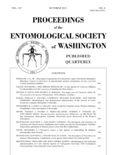
PROCEEDINGS OF THE ENTOMOLOGICAL SOCIETY OF WASHINGTON
Pioneering Insights into Insect Ecology and TaxonomyProceedings of the Entomological Society of Washington is a distinguished journal dedicated to the field of entomology, published by the Entomological Society of Washington. With a rich history dating back to 1981 and a commitment to fostering scientific discourse, this journal serves as a vital platform for researchers and professionals specializing in insect science and ecology. It holds a respectable<> impact factor and is categorized in the Q3 quartile in both Ecology, Evolution, Behavior and Systematics and Insect Science, indicating its relevance within the scientific community. Although it does not offer open access, it provides a curated selection of high-quality research articles that significantly contribute to the understanding of insect biology, behavior, and taxonomy. The journal aims to bridge gaps in current research and inspire innovations in entomological studies, making it an essential resource for students, researchers, and practitioners in the field.
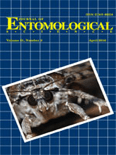
JOURNAL OF ENTOMOLOGICAL SCIENCE
Exploring the Frontiers of Insect ScienceJOURNAL OF ENTOMOLOGICAL SCIENCE, published by the Georgia Entomological Society Inc, is a crucial resource in the field of insect science and ecology. With a rich history since its inception in 1993, the journal provides a platform for innovative research and comprehensive reviews addressing various aspects of entomology. Although not an open-access journal, it is highly regarded within its community, holding a Q3 ranking in Agronomy and Crop Science, Ecology, Evolution, Behavior and Systematics, and Insect Science as of 2023. Each issue promises to contribute valuable insights to professionals, researchers, and students alike, making it an essential publication for those looking to stay abreast of developments in entomological studies. The journal's editorial commitment ensures that it remains at the forefront of entomological research through rigorous peer reviews and a dedication to scholarly excellence.
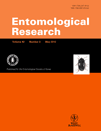
ENTOMOLOGICAL RESEARCH
Innovating Pest Management Strategies through ResearchENTOMOLOGICAL RESEARCH, published by Wiley, is a prominent journal within the field of Insect Science, with a significant focus on advancing our understanding of entomological studies, including pest management, biodiversity, and ecological impacts of insects. Since its inception in 2007, the journal has served as a vital platform for researchers and practitioners to publish high-quality, peer-reviewed articles that contribute to the growing body of knowledge in this essential discipline. With an H-index illustrating its citation impact and its classification in the 2023 Scopus quartile rankings at Q3, ENTOMOLOGICAL RESEARCH ranks 69 out of 181 journals in its field, positioning itself within the 62nd percentile, which underscores its relevance and contribution to agricultural and biological sciences. Although it does not offer Open Access, the journal remains committed to ensuring that its content reaches the widest possible audience, supporting ongoing discoveries and innovations in insect science. For researchers, professionals, and students seeking to remain at the forefront of entomological advancements, ENTOMOLOGICAL RESEARCH is an indispensable resource.
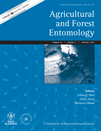
AGRICULTURAL AND FOREST ENTOMOLOGY
Exploring the vital role of insects in sustainable ecosystems.AGRICULTURAL AND FOREST ENTOMOLOGY is a leading journal published by Wiley, focusing on the interface of entomology, agriculture, and forestry. With a robust impact reflected in its Q2 and Q1 quartile rankings in prominent categories like Agronomy and Crop Science, Forestry, and Insect Science, this journal serves as a vital platform for researchers and professionals seeking to advance their understanding of insect impacts on agricultural and forest ecosystems. Since its inception in 1999, it has provided a comprehensive collection of high-quality research, facilitating interdisciplinary discussions and innovations in pest management, biodiversity, and sustainable practices. Although it does not currently offer Open Access, the journal continues to uphold rigorous peer-review standards, ensuring that published works maintain a profound scientific value. As of 2023, its Scopus rankings further signify its prominence in the field, engaging a global audience keen on addressing the pressing challenges faced within agricultural and forest sciences.

ENVIRONMENTAL ENTOMOLOGY
Delving into the Ecological Impact of Insect LifeENVIRONMENTAL ENTOMOLOGY, published by Oxford University Press, is a premier academic journal dedicated to advancing the field of entomology through the lens of environmental science. With the ISSN 0046-225X and E-ISSN 1938-2936, this journal has been a pivotal platform since its inception in 1973, currently converging until 2024. Recognized within the Q2 and Q1 category quartiles, it holds a prominent position, ranking 41st in Insect Science and 225th in Ecology, Evolution, Behavior and Systematics, showcasing its impact and relevance in the scientific community. The journal encompasses a broad scope, covering critical topics related to the interplay of insects and their environments, making it an essential resource for researchers, professionals, and students interested in ecological dynamics and insect biology. Although it does not provide open access, the research published here is vital for those striving to enhance their understanding of ecological systems and the vital roles insects play therein.